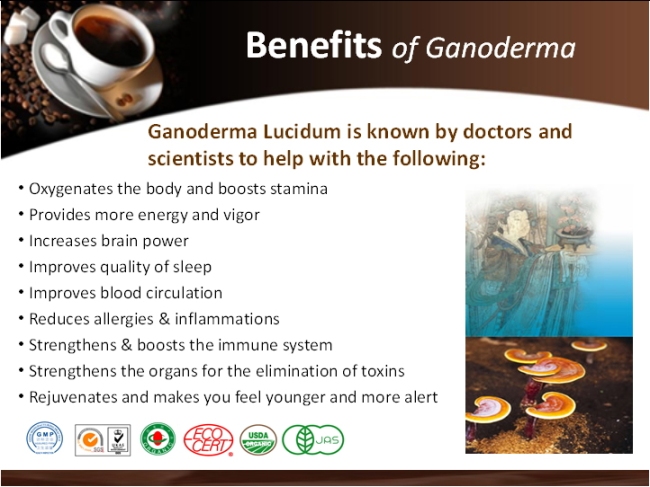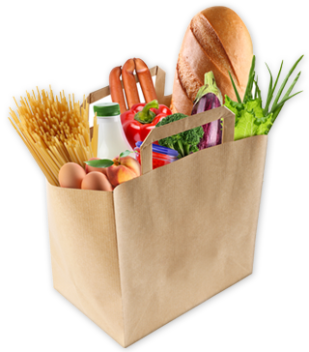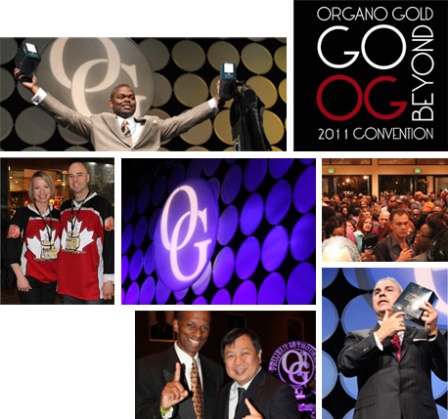The health effects of coffee have been studied to determine how coffee drinking affects humans. Coffee contains several compounds which are known to affect human body chemistry. The coffee bean itself contains chemicals which are mild psychotropics for humans as a defense mechanism of the Coffee plant. These chemicals are toxic in large doses, or even in their normal amount when consumed by many creatures which may otherwise have threatened the beans in the wild. The primary psychoactive chemical in coffee is caffeine, which acts as a stimulant.
Recent research has uncovered additional stimulating effects of coffee which are not related to its caffeine content. Coffee contains a currently unknown chemical agent which stimulates the production of cortisone and adrenaline, two stimulating hormones.[1][not in citation given]
A May 2012 study published in the New England Journal of Medicine found that coffee drinkers “who drank at least two or three cups a day were about 10 percent or 15 percent less likely to die for any reason during the 13 years of the study.”[2] The researchers who conducted the study said that this does not necessarily provide a cause-and-effect relationship, but will help point other researchers in the right direction.[3]
Decaffeinated coffee (sometimes called decaf) is available. This is coffee from which most of the caffeine has been removed, by the Swiss water process (which involves the soaking of raw beans to remove the caffeine) or the use of a chemical solvent such as trichloroethylene (“tri”), or the more popular methylene chloride, in a similar process. Another solvent used is ethyl acetate; the resultant decaffeinated coffee is marketed as “natural decaf” because ethyl acetate is naturally present in fruit. Extraction with supercritical carbon dioxide has also been employed.
Decaffeinated coffee usually loses some flavor compared to normal coffee. There are also coffee alternatives that resemble coffee in taste but contain no caffeine. These are available both in ground form for brewing and in instant form.
Caffeine dependency and withdrawal symptoms are well-documented.
All-cause mortality
In women, coffee consumption significantly decreases all-cause mortality, apparently decreasing somewhat linearly to a relative risk of approximately 0.85 for those drinking 3 cups per day compared to those who consume no coffee, but the relative risk then remains almost the same for up to 6 cups per day, according to a large prospective cohort study in 1993.[4] In men, these beneficial effects were not as great, in fact with an increased risk for those drinking approximately one cup every other day compared to those drinking none, but yet having a significant trend towards less mortality for those who drink more than 2 cups per day compared to those who drink none.[4] Results were similar for decaffeinated coffee.[4] An inverse association between coffee consumption and total and cause-specific mortality was also found in a 2012 analysis of data from the National Institutes of Health–AARP Diet and Health Study..
Reduced risk of Alzheimer’s disease and dementia
Several studies comparing moderate coffee drinkers (defined as 3–5 cups per day) with light coffee drinkers (defined as 0–2 cups per day) found that those who drank more coffee were significantly less likely to develop Alzheimer’s disease later in life.[5][6][7] [8] A longitudinal study in 2009 found that moderate coffee drinkers had reduced risk of developing dementia in addition to Alzheimer’s disease…
Reduced risk of gallstone disease [edit]
Drinking caffeinated coffee has been correlated with a lower incidence of gallstones and gallbladder disease in both men[10] and women[11] in two studies performed by the Harvard School of Public Health. A lessened risk was not seen in those who drank decaffeinated coffee.
Reduced risk of Parkinson’s disease
A study comparing heavy coffee drinkers (3.5 cups a day) with non-drinkers found that the coffee drinkers were significantly less likely to develop Parkinson’s disease later in life.[12] Likewise, a second study found an inverse relationship between the amount of coffee regularly drunk and the likelihood of developing Parkinson’s disease.
Cognitive performance
Many people drink coffee for its ability to increase short term recall.[14]
Likewise, in tests of simple reaction time, choice reaction time, incidental verbal memory, and visuospatial reasoning, participants who regularly drank coffee were found to perform better on all tests, with a positive relationship between test scores and the amount of coffee regularly drunk. Elderly participants were found to have the largest effect associated with regular coffee drinking.[15] Another study found that women over the age of 80 performed significantly better on cognitive tests if they had regularly drunk coffee over their lifetimes.[16] A recent study showed that roast coffee protected primary neuronal cells against hydrogen peroxide-induced cell death.
Caffeine and analgesics
Coffee contains caffeine, which may increase the effectiveness of gastrointestinal uptake of some pain killers, especially in patients with migraine and headache medications.[18] For this reason, many over-the-counter headache drugs include caffeine in their formula. Caffeine itself does not have analgesic properties. In some patients with migraine, caffeine can alleviate pain by acting on the cerebral blood vessels. A 2012 study suggested caffeinated coffee reduced pain in an office environment.
Anti diabetic
Coffee intake may reduce one’s risk of diabetes mellitus type 2 by up to half.[20] While this was originally noticed in patients who consumed high amounts (7 cups a day), the relationship was later shown to be linear.[21][22] This effect has been attributed to the compounds caffeic acid and chlorogenic acid, which are thought to suppress the formation of human islet amyloid polypeptide (hlAPP).
Liver protection
Coffee can also reduce the incidence of cirrhosis of the liver[24] and has been linked to a reduced risk of hepatocellular carcinoma, a primary liver cancer that usually arises in patients with preexisting cirrhosis.[25] The exact mechanism and the amount of coffee needed to achieve a beneficial effect have long been unclear.[26] The cytokine transforming growth factor (TGF) beta has long been recognized for promoting fibrosis ability acting through the Smad family of transcription factors. In a report published in the Journal of Hepatology, Gressner and colleagues provide the first mechanistic context for the epidemiological studies on coffee drinkers by showing that caffeine may have potent anti-fibrotic capabilities through its ability to antagonize the Smad pathway.
Cancer
Coffee consumption is also correlated in Africa to a reduced risk of oral, esophageal, and pharyngeal cancer.[28][29] In ovarian cancer, no benefit was found.[30] In the Nurses’ Health Study and a 2011 Swedish study, a modest reduction in breast cancer was observed in postmenopausal women only, which was not confirmed in decaffeinated coffee,[31][32] and a reduction in endometrial cancer was observed in people who drank either caffeinated or decaffeinated coffee.[33] The Harvard Medical School reported in 2006 that researchers found that coffee drinkers were 50% less likely to get liver cancer than nondrinkers.[34] Another study found a correlation between coffee consumption (both regular and decaffinated) and a lower risk of aggressive prostate cancer.
Instant coffee contains a much higher level of acrylamide than brewed coffee.
Cardioprotective
Coffee moderately reduces the incidence of dying from cardiovascular disease, according to a large prospective cohort study published in 2008.[38] A 2009 prospective study in Japan following nearly 77,000 individuals aged 40 to 79 found that coffee consumption, along with caffeine intake, was associated with a reduced risk of dying from cardiovascular disease.
A 2012 meta-analysis concluded that people who drank moderate amounts of coffee had a lower rate of heart failure, with the biggest effect found for those who drank more than four cups a day..
Laxative / diuretic
Coffee is also a powerful stimulant for peristalsis and is sometimes considered to prevent constipation. However, coffee can also cause excessively loose bowel movements. The stimulative effect of coffee consumption on the colon is found in both caffeinated and decaffeinated coffee.
Contrary to popular belief, caffeine does not act as a diuretic when consumed in moderation (less than five cups a day or 500 to 600 milligrams), and does not lead to dehydration or to a water-electrolyte imbalance; current evidence suggests that caffeinated beverages contribute to the body’s daily fluid requirements no differently from pure water.
Antioxidant
Coffee contains polyphenols such as flavan-3-ols (monomers and procyanidins), hydroxycinnamic acids, flavonols and anthocyanidins.[47] These compounds have antioxidative effect and potentially reduce oxidative cell damage. One particular substance with putative anticarcinogenic effect is methylpyridinium. This compound is not present in significant amounts in other foods. Methylpyridinium is not present in raw coffee beans but is formed during the roasting process from trigonelline, which is common in raw coffee beans. It is present in both caffeinated and decaffeinated coffee, and even in instant coffee.[48] Research funded by Kraft Foods shows that roast coffee contains more lipophilic antioxidants and chlorogenic acid lactones and is more protective against hydrogen peroxide-induced cell death in primary neuronal cells than green coffee.[17] The espresso method of extraction yields higher antioxidant activity than other brewing methods.[49]
Prevention of dental cavities
The tannins in coffee may reduce the cariogenic potential of foods. In vitro experiments have shown that these polyphenolic compounds may interfere with glucosyltransferase activity of mutans streptococci, which may reduce plaque formation.[50]
Gout
Coffee consumption contributes to a decreased risk of gout in men over age 40. In a large study of over 45,000 men over a 12-year period, the risk for developing gout in men over 40 was inversely proportional with the amount of coffee consumed.[51]
Blood pressure
A 2011 study showed that moderate (≤4 cups per day) coffee consumption was inversely associated with high blood pressure and high triglyceride level in Japanese men.[52] However, the study showed no significant association between coffee consumption and prevalence of metabolic syndrome for Japanese women. Click Here For More Information




 Learn More>>>>
Learn More>>>>











